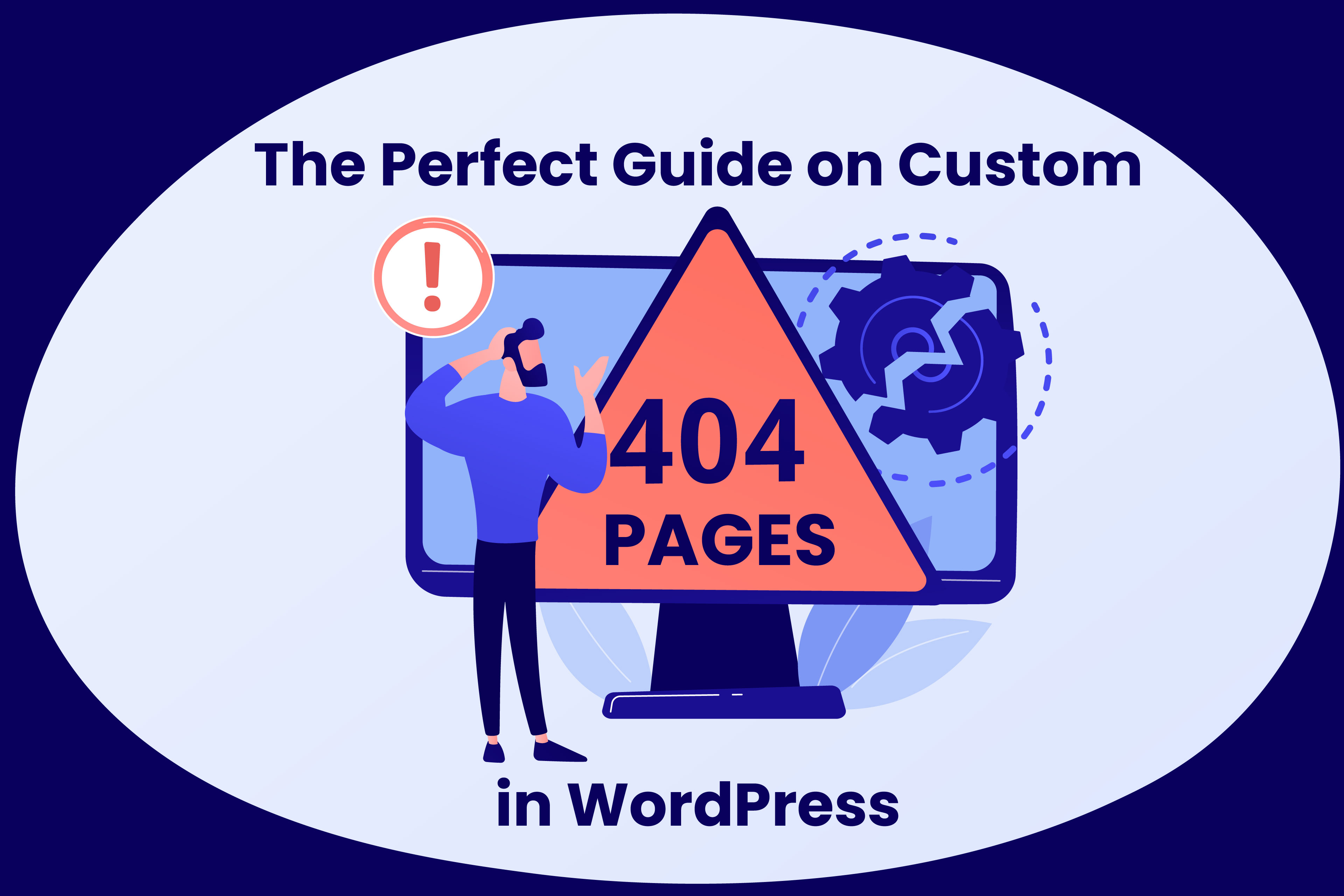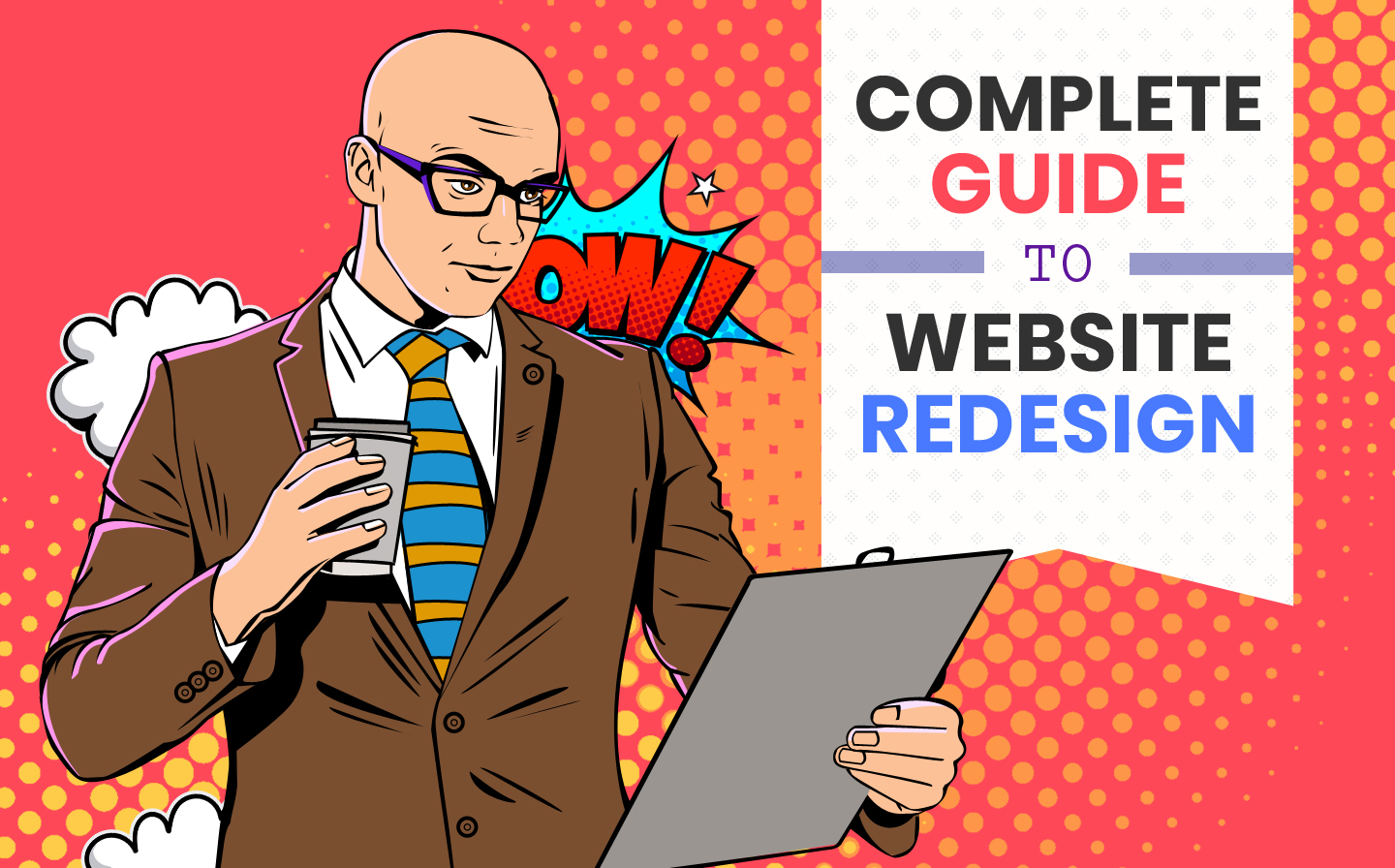Website redesign projects stem from the need to have a better website. It is that simple. However, most people commit the mistake of taking an existing website design without thinking ahead. They result in redesigning the same structure, but only with a few tweaks.
Winding up with a “new” website takes proper skills and planning. If done wrong, having a new one with the same old problems will be the case. To avoid this issue, read on for more info:
Frequently Asked Questions:
- What is website redesign?
- Why is redesigning a website important?
- What are the common challenges that require website redesign?
- How often should you redesign a website?
- How do you plan a website redesign?
- Website redesign strategy
- Website redesign tips
- How long does it take to redesign a website?
- Website redesign checklist
- How much does it cost to redesign a website?
Overview – Website Redesign Services
Anyone who has worked on website design projects would know that you must perfect its three main phases. Let us go through each of them later on. But first, let’s go over the following points:
- Your goals for the project
- Understand who the audiences of the site are
- How these people got there
- Point out a timeline for the project
Once you’ve established the four points listed above, you’re well on your way to a better website design. So let’s start:
Establish Your Goals
Establishing your goals before starting the project can give you a clear idea of what winning would look like for you. What are the steps to make you feel satisfied with the results? What is your end in mind? Do you want a new website design for six months? What’s your process of building it, and will you be happy as you go along? These questions will help you find what your specific goals are and would guide your actions throughout.
User Personas
You need to have a clear grasp of the various types of people who visit your website. Why are they visiting your website? Unfortunately, most website owners find it hard to answer this question. They either overthink in finding the reasons or don’t understand the reasons behind their audiences’ actions.
To find this out, you need to think about the problems that they are trying to answer. Then, when you know their pain points, you can be grounded on the right causes as you implement changes in your website redesign project.
Traffic Acquisition
Some web design owners will say that not many people often visit their sites, which might not be true at all. However, just because Google says so doesn’t mean that that website has no audience.
Some website owners implement strategies that work for them. For example, some use outbound sales teams, while others generate views from tradeshows.
So whatever you find from your end, write it down. All of them can influence your website design. For example, ask yourself if your website is a lead conversion tool or a lead-generating tool. You won’t know the answer until you understand how you are generating website traffic. Better, ask someone from Auckland website designers or a website designing company for a more professional approach.
Timeline
Talk about timelines, and that’s when you know when to start expecting success. Timelines let you focus on the overall process of the project rather than a specific goal.
Most website owners almost don’t stick to a timeline. Due to the many unknown variables that can affect your decisions, your project might experience changes as you go through the process. However, you can get better at taking control once you get your content in order.
Content is king, and it’s the bottleneck to all projects. So, make sure to have someone take care of that aspect to get through easier.
Content Phase
Most people go wrong during the content phases. Some wind up paving streets over known mistakes, but they go on anyway because they don’t know better. That said, you need to be proactive in throwing out the baby with the bathwater.
Do not use existing content from your old website. That might sound harsh and too much; however, if you want your audience to look at your new website with fresh eyes, leverage all your existing collaterals.
Sitemap
Your website’s structure is called a sitemap. It contains all the pages of the website and how they are all related to each other. Sitemaps are the skeletons upon which the body of websites live.
Current Sitemap
Pull up a Google sheet and your current sitemap. List it out and take inventory of all the pages along with their corresponding URLs. This list can help you set up redirects with our new website.
Google Analytics
Auditing the Google Analytics of your site is necessary to see how users are interacting with the website. It can also give insights based on current user behavior.
New Sitemap
Based on the findings, establishing a new sitemap becomes easier. The process includes adding new pages that didn’t exist before or removing those that serve no purpose. Reconstructing and/or renaming pages can also happen as needed.
Content Pull
Some website owners make it hard to have a better website design because they can get better content. You can aid this by pulling all of the content from the current site and consolidating them into a series of Google Docs.
Google Docs can act as the central repository for all site content, and it doesn’t have any issue with conversion control. As a result, you can have the latest version of the content you need. In addition, having a shared and centralized environment may stop setbacks along the process. It also helps save time when it comes to implementing collaborative efforts.
Imagery
Aside from pulling content on Google Docs, sharing images also happen using Google Drive. To use this resource effectively, you have to set up a series of Google Drive folders. The key is to mirror the new website sitemap for better and easier navigation.
Keep a Google Sheet that lists all of those you have to buy for the project for stock photos. Then, list them side by side with their corresponding prices to help you have a clearer view of your costing later on.
Stock photos usually cost about $20 to $30 per image. So most websites end up spending about $200 to $300 on imagery.
Design Phase
The web design phase is where big problems arise during website redesign projects. We can say that there are a chicken and an egg situation with the content and the website design.
Which one do you want to implement first, the website design or the content? The critical truth is that you kind of need to do both simultaneously.
How is this possible?
Well, the key is starting with the sitemap, which outlines all of the pages of your site. Then, you need to work on the homepage structure. For example, the homepage might be a picture of your sitemap.
But another thing usually happens…
As website designers design your homepage, you might realize that you’re missing a few content elements. Naturally, this would make you go back and update your sitemap. When you find yourself in this situation, remember that the website redesigning processes can be less of a scientific process but rather an artistic one.
So here’s how you should do it…
1) Homepage first
The website design phase demands the homepage be finalized first. Well, a comprehensive rough draft might do. Once the homepage web design is established, you have your colors, fonts, and the general website language for the website settled too.
2) Design Mockups
Design mockups are an exact picture of what your website should look like. It’s done using Photoshop, and here’s a pro tip:
When working with a website designer, make sure you receive mockups. When the website designer presents to you a functioning website right off the bat, which means they’re working with a template. Premade templates mean that you’re not getting a fresh start, and that’s not what you’re paying for. Try Auckland website designer for best results.
3) Wireframes vs. Mockups
Wireframes are a bit different from mockups. First off, mockups are an exact photo of what you’re website looks like. However, a wireframe is a minimal and stylized outline of the website and its structure.
Say a subway map. Notice the difference between the actual picture and how minimal the map’s web design is.
Wireframes make it easier to present thoughts and ideas to website designers and stakeholders. In addition, carrying a handy wireframing tool can make the process smoother during the onset of redesigning a website.
4) Fonts
One of the most underrated and overlooked aspects of websites is the font. Up to 80-90% of most sites are text, and understanding how huge is the impact of fonts can bring you success.
The general rule with fonts is that you need a maximum of two font styles for your project. Then settle on 2-3 alignments on a page. Have more is less when it comes to fonts.
5) Colours
Poorly design websites often have one thing in common: there’s too much going on.
That’s totally true in colors. The general rule with colors is to have:
- 2-3 primary colors
- 2-3 accent colors
Remember to pick colors that are extremely contrasted. Then, pull up a contrast checker to make sure you’re choosing the right ones. This is why color code is important in web design.
6) Imagery
Some people settle on hating stock images. That’s because they think of cliché stock imagery of people in suits, shaking hands.
The truth is that you can take advantage of stock images when they complement and help your brand tell a story. However, most readers have short attention spans, and you need to have a compelling page using unique imagery.
7) Page Templates
Most website owners find it hard to understand page templates. The basic idea behind this is that not every website page will be a unique one. Instead, many of them have to follow the same layout and structure. This format is called the page template.
Website designer companies, like the design companies Auckland, scope a website project with how many page templates should be available for the site. The takeaway is that the more unique pages you want, the more time-intensive the project becomes. As a result, you’ll be paying more.
Redesigning a Website with SEO In Mind
Current SEO Audit
You need to have a baseline of the current SEO status of your website. Using tools like Ahrefs can help you measure your site’s current domain rating. You can also know what keywords your site is ranking for.
If your current site scores 0 with the Domain Rating and you’re not ranking for any keyword, then you can ignore the rest of this section.
However, if you have an excellent Domain Rating with a plausible number of SEO rankings, you need an SEO professional. Having someone on board who knows how to rank your pages can pay off in the long run as Google acknowledges your site as a trustworthy one in your chosen niche.
Top Pages
SEO can be an 80/20 situation if you only have a few pages that bring rankings and traffic. Take note of those pages since you need to pay attention to them in the long run.
URL Structure
Keep an inventory of all your current URL structures. The main goal is that you want to retain as much URL structure as possible. Then, set up 301 redirects for URLs that are different.
REMEMBER: Don’t Mess With Success
For all the pages ranking on Google currently, you need to keep as many of them. That means keeping the following:
- Same content
- Same title tag
- Same meta description
- Same alt tags on images
- Same URL structure
Development Phase
Once you’re over the content and web design phase, it’s time to conquer the development phase.
During the development phase, you’re trying to turn the website from an image in photoshop into a coded website on the web.
Here’s the checklist of the web development process:
Initial Development
When the developer is done coding on their local machine, the codes are uploaded to a test URL. Most developers code the HTML and CSS portion of the website first. Once the review is over, you can say that the initial aspect of the development is completed.
CMS Development
When the initial front-end development is done, site integration into a CMS takes place. Developers commonly use WordPress. CMS development might be the most underappreciated aspect of the process. It will say how easy having edits and updates at the backend of your website.
Mobile Development
Many clients are amazed to learn that mobile website design happens during the development phase. The truth is that there are hundreds of devices out there to create a website. To handle this massive number, developers use a mobile-first web design. This step helps the site to display well across all devices, both current and future ones.
Quality Assurance
The expression about hating to watch sausages being made echoes truth in the website development process too.
As the website owner, you might be taken aback by seeing poor displays on devices and browsers. That’s why a series of rigorous quality assurance (QA) is a need.
QA tests and retests new websites across all major device widths and browsers. This stage takes time, so you might want to allocate a week or two for it. The time it takes depends on how massive and extreme is your
website redesign project.
Training
Once all the preceding stages are done, you now have a website!
Congratulations! But wait, there is a set more other tedious tasks to consider: editing and updating.
This stage is where training is necessary. First, you need to make sure that you thoroughly understand how the backend of your website works. Knowing enough would let you know how you can make common types of edits on your website.
Some developers shoot up to 10-15 little screencast videos on major aspects of the website backend. They work best because some users come and go. Referring back to the video helps in training anyone responsible for the site.
Website Redesign Launch Checklist
Redesign a website isn’t as crucial as launching an aircraft. However, there are enough factors to warrant a thorough checklist before each launch. Take note of the following:
Hosting Credentials
Your hosting environment and domain registrar are two separate entities. However, they work together to support the display of your site on the web. With a website redesign, you would have both already settled.
The next step is to have a clearer understanding of your current hosting setup. Will it point in a new direction, or will it remain as it is?
You also need to make sure that you’re sharing the proper credentials with the person launching your new web design.
Email
Aside from your website hosting, you also have to know about email hosting. You won’t have this issue if you’re launching a new site in the same hosting environment.
However, if you’re launching a new site on a new hosting environment, you need to reassure that you don’t mess up your existing email hosting records. Remember this:
If you’re only changing your A record, there’s no need to sort out the existing email setup. But if you’re implementing changes in the actual nameservers, you might mess up the existing email setup.
To avoid any technical issues, you need someone to make sure that the MX records of the new host will match the existing MX records.
Backup Existing Website
You need an archive folder (www.yourdomain.com/archive) if you’re keeping your current hosting environment. You need one as a backup folder of your previous website.
So make sure that your developer de-indexes this folder so that Google won’t crawl and display its pages on the search results.
On the other hand, if you’re embracing a new hosting environment, you can use a zipped folder to backup your previous site. Then save it to your personal computer for safekeeping.
Google Analytics
On your new website, you need to see to it that Google Analytics is running. You can do this step on the test site pre-launch.
Ideally, you can paste the actual code into the website <head> instead of a plugin. However, sometimes, plugins may break and stop reporting data.
One bonus tip about Google Analytics:
Add a note within your Google Analytics at the date of your website launch. It can help you keep track of the performance of your new website.
WordPress Discourage Search Engines
Do you have a WordPress website? If yes, eyes here.
When building a test site, WordPress can discourage indexing the site by Google.
It’s a positive thing during the web development phase. You don’t need Google to index your test site anyway.
But as soon as your website launches, you need to be sure to undo this function. To do this, go to:
- Dashboard
- Setting
- Reading
- Then uncheck the “discourage search engines” checkbox
Frequently Asked Questions
What is Website Redesign?
As the name suggests, a website redesign is a process of redesigning a website. The tricky part is that not all website redesigns demand the same process.
Sometimes, you can just implement tweaks and updates on the website design like the Website Design NZ. Take this as an example:
You have a WordPress website that’s a couple of years old. You might want a few changes and adjustments to the site’s colors, fonts, and imagery. In this case, you can keep the same WordPress theme and just update the images and CSS within it.
In other instances, you might need to transfer from one entire CMS to another. Here’s an example:
You might be using an old Joomla website, and you want to hop on a new WordPress website. In that case, you have to have a new website. This is because you have changed the design and the URL structure of all your site pages.
Taking this example into consideration, the main elements of designing a website is:
An existing website with a given domain name and a ‘new’ website will replace the old one on the same domain name URL.
Why is Redesigning a Website Important?
Your website reflects your brand on the web. In other words, it’s your virtual salesman to the rest of the world.
As the adage says, there’s no second chance of making first impressions. That said, your website should communicate your business to the audience seamlessly. The goal is to either introduce your business website or convert leads into actual customers.
Since the optimum purpose of your site is to make money, it has to mirror your brand’s worth to your target audience too.
In keeping an outdated website, you might be losing money instead. If it doesn’t make you the dough, why keep it, though?
Making money is why redesigning a website is important.
Why redesign YOUR website?
You can scale your website redesign based on your business goals. To help you better imagine your redesign process, here’s a deeper explanation of common redesign goals and how you can achieve them:
- You want to rebrand your site.
If you’re aiming to rebrand your website, you need tools that are flexible and easy to use. If your current website building tools aren’t, your web designer can look for platforms that will enable you to start from scratch.
- You want to drive more traffic to your site.
A great way to drive traffic to your site is by prioritizing blogs as part of your content strategy. A website with blogs has a 434% more chance of obtaining top ranks on search engines. Redesigning your website to achieve more traffic needs you to migrate to a CMS with better content management features. That is if you first created your website on a website builder. Then you can choose your integrations to optimize your site.
- You want to convert more visitors into leads.
If you’re already driving ample traffic to your website and want to convert them into leads, you need to sit around having a clear conversion strategy. Your new site should tell visitors:
– Who you are
– What to do
– Who your target audience is
The bottom line is they need to know what to do next.
What are the Common Challenges That Require Website Redesign?
In many cases, most redesign projects are successful because of new people in the team. They have fresh eyes that help in recognizing issues and limitations with the current site.
These problems might include:
- Technical limitations like a lack of mobile-friendly website design.
- Aesthetic issues like the current site looking old and ugly
- Representation issues like the business have grown, but the websites remain to look like what made it in the basement of a college student
How Often Should You Redesign a Website?
A trusty rule of thumb is to revamp your site every two to three years. However, the SaaS or technology industry needs more frequent updates, usually falling between the 1-2 year range.
Other conservative industries like financial or construction may stretch their web redesigns to 3-5 years.
In a more strict sense, the need to redesign a website depends on one thing: as soon as the redesign brings in more income.
If you’ve recently implemented a website redesign, but it’s still not as profitable, then it might not be an issue of time. The question is simple: would a new website better serve your brand now? If the answer is yes, it’s time to call a web developer and plan your redesign process.
How Do You Plan a Website Redesign?
The Website Design Process you’ve read above is a great place to start. However, here’s are more points you need to cover:
Plan Your Budget
Website pricing doesn’t have a fixed price. That said, it’s ideal for you to have a specific price range in mind that you’re willing to cover for a new website.
Once you know your dollar range, you can set your strategy for the rest of the redesign project. The great thing is that you can find a website solution for any budget range you have. You just have to be clear on your budget first.
Understand Your Project Scope
Most of the time, developers will be asked to quote a project without clear and enough information. To give a substantial quote, here are the main things to know first:
How many pages will the new site have?
While this aspect might sound straightforward to find out, it’s not. Most people don’t have enough sense of the number of pages they will need for the website. At times, they might say that they only need 5-7 pages. But they will submit a Google site search on their website, which results in 150+ pages on their site.
Doing a Google site search takes only one step:
- Input “site”
- Input the domain name
Do these without putting any spaces between them. Then it will tell the number of indexed pages, and this number is technically the number of pages on the website.
How many unique pages will the new site have?
Scoping a project in terms of the number of page templates is a classic way to go.
A page template is a unique page and has a different design from other pages on the front end. It also has its own development interface on the backend. The main idea is that you need a bigger budget if you need more unique pages.
We’ve worked on websites with more than a hundred pages but only 2-5 unique page templates. However, we’ve also come across 15-page sites with 15 unique page templates. That said, you should know what you want before reaching out to a web designing company.
Unique functionality
You also need to list all any unique functionality you might need with your new website. For example, your list might include the following:
- An Interactive Map
- A Unique Form Integration
- A Password-Protected Membership Area
- An Integration To Salesforce Or Marketo
There’s no limit on this list as long as you have the money to cover it. This list will then be factored into your new website proposal.
Research Other Websites
Yes, we didn’t say anything about your competition. Unfortunately, most website owners make this common mistake.
When they are asked to list other websites with features they might want to mirror, they will just send a list of their industry rivals. While it might sound sensible, it’s not the best place to look.
If you’re going to look into other websites, you might as well reach for the stars and go for the best. Search for the top-performing websites on the web today. Check out brands that ace the technology industry. Look at the websites of luxury brands or even design award winners, or just check and try website designers in Auckland.
Here’s a pro tip:
- Craft a private Pinterest pinboard
- Pin other websites that inspire your new website
- Check out the buttons
- Check out the fonts
- Check out the iconography
- Check out the spacing and headings
Once you know all these factors, it would be easier to talk to a website designer, especially a web designer in Auckland. These ideas are a great jumping-off point for your new website design.
Research Web Design Companies
Another thing about researching website design, it’s ideal to judge them based on their results.
If you’re just looking at a website design company, you either like it or don’t base on their web design portfolio. It’s that straightforward.
It’s the same trade rule with SEO companies. If they can’t rank in competitive terms, then skip working with them.
Designate a Champion
Having too many cooks in the kitchen will result in a chaotic kitchen. The same goes for redesigning websites. So if you want to avoid impending doom, make sure to delegate a champion for the project.
Find someone who can take ownership of all the deliverables. That same person will be the voice of feedback and the final decision-maker in the redesign project.
Website Redesign Strategy
Your website redesign strategy is a series of steps that you need to follow to complete your new web design.
Here’s a list of the major steps in finalizing a website redesign strategy:
1) Plan
In planning out your website redesign project, tick all the items on this list:
- Establish your Goals for the project
- Set a budget of what you are willing to pay
- Research other websites you like the look and feel of
- Understand who your customer user types are
- Evaluate how you currently generate traffic to the website
- Establish a timeline for when you want to launch the new website
2) Hire
Hire people to work with. Here’s how NOT to mess up your hiring process:
- Choose 3-5 companies to interview
- Make sure you like their web design portfolio
- Have a clear understanding of what the company does and does not do, like copywriting, SEO services, branding, etc.…
- Choose a website design company in NZ and hire them.
3) Work
Once you’ve picked out a website design company in NZ to work with, it’s time to roll up your sleeves and work. Here are tips on how to complete the project as effective as possible:
- Designate a champion for your company
- Start with the sitemap
- Get the content done
- Complete the homepage design
- Start working on the rest of the site
Say you have an existing logo design that you can’t look at because you hate it too much. Now is the perfect chance to get it redesigned too.
4) Launch
After spending time working on your new website project, make sure to wrap everything up. Here’s a set of tips to get through efficiently:
- Go through our website redesign launch checklist.
- Do an email blast to tell the world about your new website
- Announce your new website across your Social Media platforms
- Send out a Press Release to announce your new site
- Continue improving your website conversions thru A/B testing
Website Redesign Tips
Congratulations on reaching this section.
By now, you know how website redesigning should work. In this section, let’s dwell on more useful tips that can further help you with your project:
1) The Wayback Machine
The Wayback Machine is your best friend in reviewing other companies to see how they updated two things over time:
- Website design
- Messaging
This free website can take snapshots of every site throughout time. Yes, you can enter almost any website URL and have snapshots of what the site looked like for every reiteration. It’s the perfect place to check out how famous websites are evolving.
2) Ahrefs
Ahrefs is a paid tool, but it’s worth every penny spent, especially if you’re into SEO.
Talk about a must-have, and this one tops the list. It can tell you exactly what any website is:
- Ranking in terms of SEO
- Who is linking to that website
- What anchor tags is this site using
SEO-wise, Ahrefs is gold, and it can be useful for your site too. It can help you clear the BS with any SEO company that claims they know what they’re up to.
Run a quick search in Ahrefs with their URL, and you’ll get facts on what they’re doing.
3) Who. is
Many clients might not know who is their domains being registered with or where their domain is hosted.
If you have no idea about these things too, then Who. It can help you. It’s a great tool to find out both information. You can also find out how your email is being set up. It can also let you search for information on anyone else’s website.
4) InVision App
If there’s an app that lets you give your feedback directly on the website mockups, it’s InVision App.
Some Website designers use the tool. When the feedback has been collected, the client and the web designer then do a screen share to run through the feedback. Then, both revise the mockup and come up with a new and better one.
The InVision app is an effective collaboration tool for some types of projects. However, there might be some cases where printed mockups are necessary. That said, if you find it necessary to process things differently, feel free to do so.
5) Pinterest
When trying to keep track of other websites, Pinterest is a great repository of inspiration. However, to maximize this for your website design project, you need to craft a private pinboard and name it “website redesign.”
Then start pinning websites that you like. It would be useful for you to focus on individual website aspects such as:
- Buttons
- Fonts
- Icons
- Intriguing layouts
- The original use of imagery
When the time comes that you need to work with a website designer, you just have to share your pinboard. They can then easily get a grasp of how you want your designs.
Creating a pinboard of design elements that you hate might also be ideal. Again, the web designer would get ideas on what to avoid, consequently saving time along the process.
6) CopyScape
Copyscape is a premium plagiarism checker. It’s a holy grail when it comes to creating text content for your website. Making original articles is a top necessity to rank on Google and ultimately create a promising website.
7) HotJar
Learning from your current website is the best way to create a new one. This time, you need to get a clearer image of how your page visitors interact with your current website. Using the tool called HotJar, you can use heat maps of how visitors interact with the website.
You can also use the screen recordings of visitors to see how they navigate the pages of your site. Through this, you can see where you lose them.
Yes, this process can be time-consuming, and for good reasons. However, doing so can give you groundbreaking insights into which aspects of your website are most useful.
Then, as you redesign the site, you can highlight these most useful pages or streamline some of them. Most importantly, you know which ones to remove, saving you time from creating useless pages.
8) Google Optimize
Clients occasionally get hung up on finding the right headline to use on certain pages during redesign projects. A lot of times, they can also get stuck on picking between image options for the homepage.
Although important, these steps cause project delays. They will go back and forth, thinking that what they choose is the best. The hard truth is that they are wrong. Why?
The visitors will decide which features or factors are the best picks.
So how to find out? Use Google Optimize. This site allows you to run A/B tests on your new website.
Just remember that the website is only at its starting point. Even after the redesign process and after launching it, tweaking a few features are necessary. Testing and improving over the weeks are necessary to ensure the best-redesigned website possible.
What’s an A/B test?
First, you need to take the total number of visitors to a certain page on your website. Then, split them into two groups. Then, send one group to the A version of your page and the other group to the B version.
A might be different from B based on their hero image or headline. In other cases, you can implement two different designs and layouts altogether.
Then set a goal by which you will measure the results. For example, some website owners like to use form conversions. It means to count the number of visitors who stayed and completed the contact form.
The best thing about Google Optimize is that it offers a robust and easy-to-use interface for FREE!
9) Rev
As said earlier in this article, content is one of the main bottlenecks to completing a website redesign project. That said, Rev could help with content creation in a revolutionary and hassle-free manner.
Rev lets you speak out your content in audio and convert it into text. For only $1/min, Rev will convert the spoken words into edit text. Of course, those umms and ahs have no space in the text too. Once this process is done, you can hire a professional editor to polish the text for you as needed.
10) Grammarly
Another promising tool in content creation is Grammarly. You can use the free version that lets you get rid of the simplest but most embarrassing grammatical errors. However, investing in a paid version is also highly advisable. The paid version lets you create more convincing and engaging text. Most importantly, it has a plagiarism checker too.
11) Hemingway App
Earnest Hemmingway was known for his books that even third-graders could understand. That’s why he was well-received by most readers. The Hemingway App lets you know what grade level you are writing at. You can also receive suggestions on how to improve your text to better suit a wider set of audiences.
Unless you’re trying to follow specific technical writing rules, this app is a gem in keeping your text simple and accessible.
12) Free Stock Photos
Looking for eye-catching imagery that suits your redesign project can be time-consuming and costly. But you can take advantage of great stock photo websites out there.
How Long Does it Take to Redesign a Website?
One of the most common questions from website owners is how long it would take to redesign a website. Unfortunately, the answer is always the same: it depends.
It depends on what?
The main factors in determining the time to finish the whole redesigning process include:
- The size of the project
- The site owner’s ability to provide content
Most of the time will scope the projects based on:
- The total number of unique pages
- The total numbers of the site
However, to give you an idea of the typical timelines, you can refer to the following list. Note that the following ideas are based on custom website redesign projects. If you’re working with premade templates, then you might finish the project faster.
For custom projects, here it goes:
10-15 pages – 3 unique page templates – 6 weeks
Let’s set the baseline website for this example with 10-15 pages. Along with that, it has 3 unique page templates.
Creating a page is straightforward. Anytime you click on anything and it redirects you to another URL, that’s a page on the website. For example, it could be your about page or your term of service page.
A page template is more complicated. If you’ve read this article from the top, you might have an idea about it already. If you didn’t, then here’s the short version:
Page templates are pages with a unique development interface on the backend and a unique design on the front end.
For each additional page template, add another week to the timeline.
This is a rough way to estimate time. But it’s a reasonable one considering all the revisions that go on throughout the designing process.
For each additional 10 pages, add another week to the timeline.
So this time, measurement can be challenging to explain. Not all website pages are created equal when it comes to a website redesign project. For example, your current site might have 400 blog posts. Technically, they count as 400 pages. However, web designers will not consider them as pages since those could just be imported automatically.
Yet, let’s say you have a unique page template, and 10 pages cover each service. In this case, each of those service pages will count as individual pages. The same story goes with team member pages or project pages. If there’s a unique page for it, it can count as a page.
With this scenario, every 10 pages of those types of web pages, over the initial 15 pages, you should add on another week to your website redesign timeline.
Website Redesign Checklist
Now that you know what it takes to redesign a website, are you ready to hop on the real job? Now you won’t have to look at your outdated website anymore. Here’s a review of the steps you need to go through to materials your vision.
Website Redesign Checklist:
- Establish your goals for the project
- Plan your budget for the project
- Get clear on your project scope
- Research other websites you like the look and feel of
- Designate a project champion
- Get your content in order
- Research and interview
- Hire a Website Designer
How Much Does it Cost to Redesign a Website?
Like any answer to this article, the cost of redesigning a website depends on a few factors.
Three main factors can determine the cost of a website redesign project:
- Time
- Expertise
- Results
Let’s dive into each one:
1) Time
The reason why IKEA furniture is relatively affordable is the cost of labor. Rather than people assembling furniture, they relayed this job to the customers. This scheme allows the company to charge less for its products.
The same story applies to website redesigning if you have a smaller budget, the more time and energy you need to put into the project personally.
2) Expertise
Just as you aren’t a professional in assembling furniture, web design might also be new to you. That’s given. People who aren’t good at this area of expertise know that they aren’t good at it. What’s harder for some to admit is that they aren’t experts in marketing too. Whenever you need help in web design, you may check the website designer in Auckland.
For other people, they think that they’ve seen enough of it that renders them to be knowledgeable about it.
Given this, it is worth noting that there are many layers of expertise that you can engage consider:
- Graphic Design
- Development
- Copywriting
- Branding, Marketing Strategy
- Search Engine Optimization
- Conversion Rate Optimization
So when you’re asking, “how much does it cost to redesign your website?” it depends on how many areas of expertise you need to pull in for your project. Some website owners might think that they need a whole new website when, in fact, they might only need a complete marketing strategy.
3) Results
As the price of the website redesign increases, you are paying less for the service but more for the result.
This is one of the differences between hiring a professional website designer vs. your neighbor’s son in college.
You’re buying peace of their mind, and you’ll actually get results based on your budget. Also, there are fewer screw-ups and more on-time submissions.
Estimated Website Redesign Pricing
Not to leave you mid-air, here’s a list of rough pricing for a website redesign project. Of course, it’s not the same pricing for all web design companies in NZ today. But you can at least have something to compare with.
Our pricing starts at around $5,000 for a 10-15 page website. This pricing includes 3 unique page templates.
For every additional page template, you’d pay around $1,500. So each additional page is $100.
You can actually start with $0 if you’re using a free template and complete all the work by yourself. However, if you have a larger site and work with a professional web design agency, prepare up to $25,000.
Conclusion
Redesigning websites take time, money, and effort. However, investing in a better website that represents your brand best is a priceless take on achieving online success.
Having one that’s aligned with your overall business strategy can help improve your rankings, increase your overall conversion rate, and met the specific needs of your visitors and team.
This article took more than a month to complete and if you’ve made it this far, thank you—also, congratulations on making it here. Now you’re equipped with rough but comprehensive knowledge on what it takes to complete a website redesign project.
Web Digital is one of the top website design companies in Aukland, New Zealand. If you’d like to get started with your
website redesign project, our best website designers in Auckland, we’re confident of keeping you satisfied in every phase.
Is it time to redesign your site?
Let us know if you want a custom mockup of your new site, and Web Digital will send you quality ideas.





















